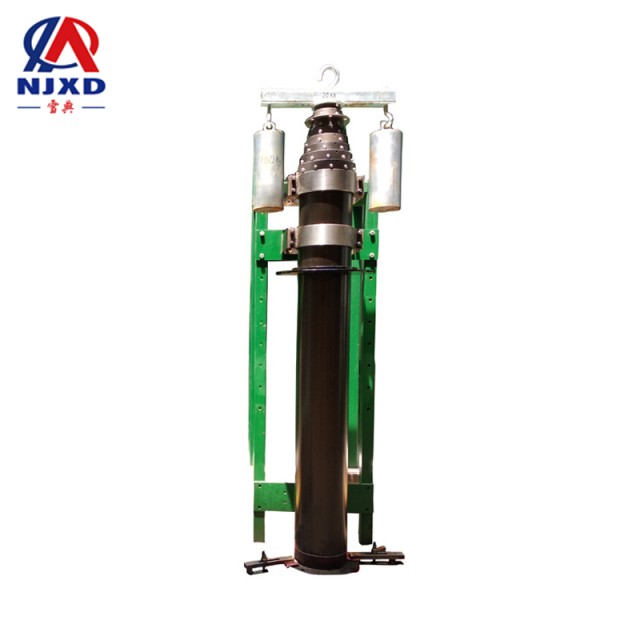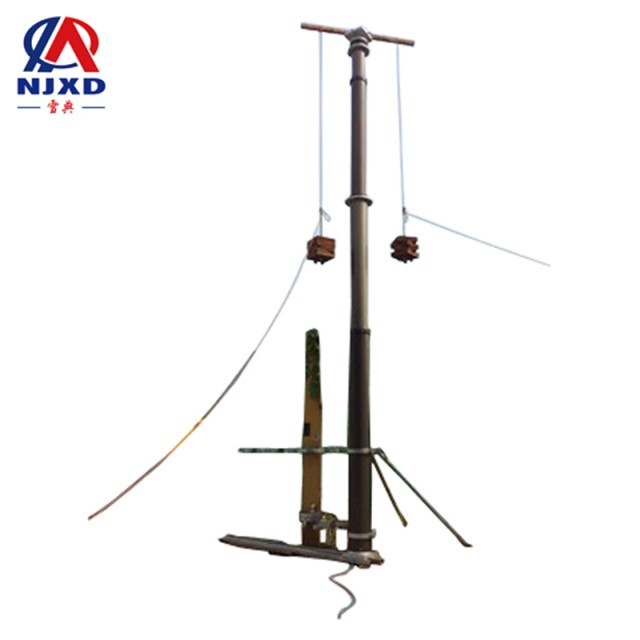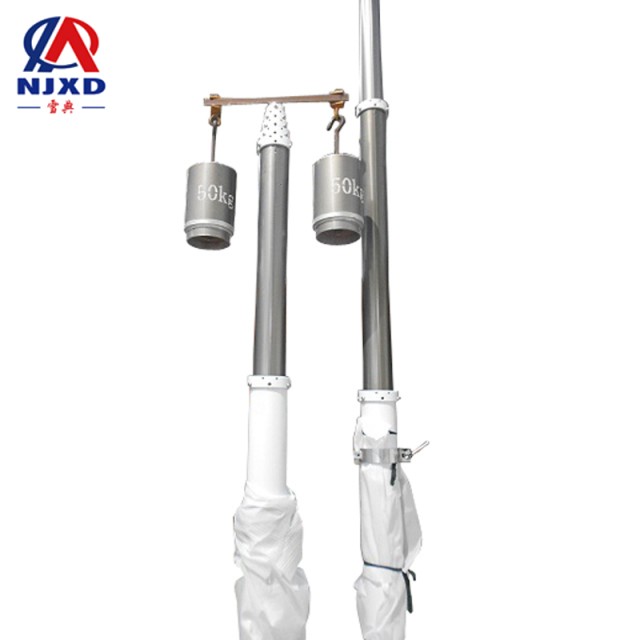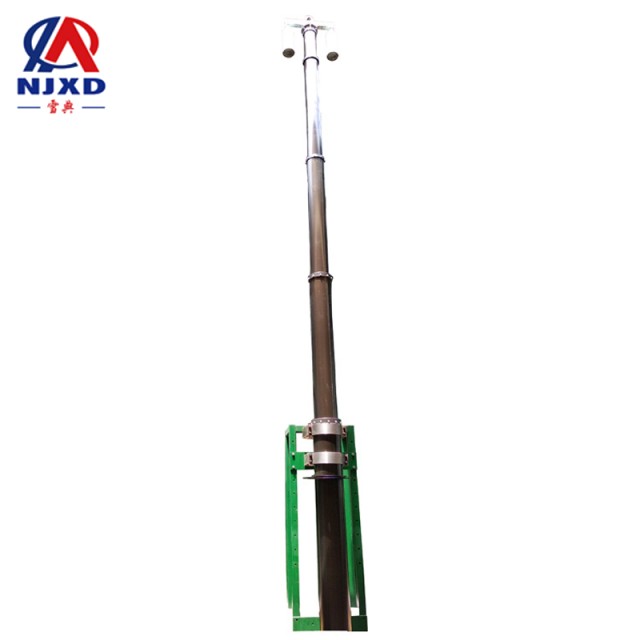NEWS
Lift Rod mechanical strength
Time:2021-04-28 View:

Mechanical Strength refers to the maximum load that a material can bear per unit area when it is subjected to external force. Generally, it is expressed by bending strength, tensile strength, compressive strength, impact strength, etc. Mechanical structure strength is an engineering science and technology, which generally comes from production and serves for production. Scientific theories and technologies are meaningful and valuable.
Introduction
Mechanical Strength refers to the ability of metal or non-metal materials to resist deformation and damage under load. Besides tensile strength, there are five kinds of bending strength, compressive strength, torsional strength and shear strength. The most commonly used strength in engineering is tensile strength. There is a certain conversion relationship between tensile strength and other strength. Through the tensile strength value of the material, other strength values can be approximately calculated.
Classification
Mechanical strength is divided into compressive strength, flexural strength and tensile strength.
compressive strength (compressive strength) code σ bc refers to the strength limit when external force is pressure.
Flexural strength refers to the ultimate breaking stress when the unit area of the material bears the bending moment.

Determination Method
There are several methods for industrial determination of mechanical strength under static conditions.
Compressive strength
Compressive strength is also called compressive strength or crushing strength. This is a common method to measure the compressive strength of single carrier particles. It uses a device that moves the horizontal plate (top plate) up and down. Record the crushing load of the sample particles by continuously increasing the load until it breaks. Generally, the average value of at least a dozen tests is taken as the compressive strength.
Of course, the mechanism of crushing is relatively complicated, and is affected by the shape of the pressing plate and the ratio of the length to diameter of the tablet. The compressive strength can be calculated by the following formula:
σD=P/F=4P/πd2=P/0.875d2
In the formula σ D-compressive strength, kgf/cm2;
P -- crushing load, kgf;
d -- average diameter of particle sample, cm.
The above calculation formula is only applicable to the vertical crushing test. At this time, both ends of the sample tablet are in contact with two flat and hard tablet and crushed.
Another compressive strength measurement method is to place the sample between two plates and press it along the radial direction of the tablet, and calculate it with the following formula:
σm=P/L
In the formula σ m-lateral compressive strength, kgf/cm;
P -- crushing load, kgf;
L -- sample load length, cm.
Blade hardness
This method uses a knife with a 0.3mm blade to replace the plate, and then many tablets to be tested are placed under the blade, and then 1kg of force is applied on the blade, record the percentage of sample reduction when 1kg force is applied. After that, perform the same operation according to the pressure increment of each 1kg respectively until all the pressures of sample reduction to 10kg are recorded.
Compressive strength of irregular-shaped carrier
For carriers with irregular shapes and no structural damage or carriers with small particle sizes, a piston can be installed in a special cylinder, and then a certain load can be added to the sample through the piston. After that, the sample is taken out to measure its mass percentage through a certain net, and then the compressive strength of the sample is expressed by mass percentage fine powder. This measurement method is sometimes called accumulation strength measurement.
When measuring the mechanical strength of the carrier, such as Lacey ring, spindle piece with a diameter greater than 1cm, or ball with a diameter of more than 45mm, a single particle test method can be adopted, in order to make the measured data representative, generally, the number of measurements should not be less than 50 tablets. The strip carrier should be cut into 3~5mm to ensure the average reproduction performance ≥95%. For small particle size carriers, it is better to adopt the accumulation strength measurement method.
attrition rate
In order to know the anti-wear strength that the carrier can have in the transportation process and reaction process after being made into the catalyst, or the anti-wear strength of the carrier itself, the rotating wear cylinder test can be adopted to measure the attrition rate of the carrier. The right diagram shows the structural schematic diagram of the wear cylinder used for ASTM wear test. The inner diameter of the abrasion cylinder is 254mm, the length is 152mm, and a baffle with the same length and simplified length and a radial height of 51mm is installed. The simplified front end has a top cover to prevent the fine powder generated during the wear test from escaping. The drum is placed on the rotating shaft to make the cylinder rotate radially, and the rotating speed is 60r/min.
During the test, the 100g sample was dried at 150℃ for 1H, cooled to room temperature in the dryer, and then placed on the analytical balance for accurate weighing, weighing to 0.001g. Then quickly put the sample into the clean abrasion cylinder. Tighten the top cover and clip it on the rotating shaft for 30min wear test.
After the test, pour the sample on the specified standard sieve for screening. Then attrition rate can be calculated using the following formula:
η=W-W1/W×100%
In the formula n-attrition rate of the carrier;
W -- mass of carrier sample before abrasion test, g;
W1 -- mass of carrier sample after abrasion test, g.

Principle
When the external force is perpendicular to the axis of the object, the ultimate resistance of the object after being affected by the external force is first bent to the moment of breaking, which is called flexural strength (or bending strength). The empirical compressive strength is twice the flexural strength, and the flexural strength is twice the tensile strength.
Tensile strength refers to the stress (σ) obtained by dividing the maximum force (Fb) borne by the sample during the tensile process by the original cross-sectional area (So) of the sample, it is called tensile strength (σ B) in N/mm2(MPa). It indicates the maximum ability of metal materials to resist damage under the action of tension.
The mechanical strength of the material includes tensile, compression, bending, shearing, impact, fatigue, etc. Through testing the mechanical strength of ceramics and metals, we can understand the differences in mechanical strength of different kinds of materials and master the testing principle and calculation method of material strength.
Mechanical structure strength is an engineering science and technology, which generally comes from production and serves for production. Scientific theories and technologies are meaningful and valuable.
Evaluation
Mechanical strength evaluation includes four parts: static stiffness evaluation, static strength evaluation, fatigue strength evaluation and fracture strength evaluation.
Static stiffness evaluation includes the evaluation of torsional stiffness of equal straight bar, the evaluation of bending strength of bending beam, the evaluation of static stiffness of thin plate under bending load, and the calculation of thin shell deformation;
Static strength evaluation includes conventional design static strength evaluation, ultimate design static strength evaluation and thermal stress strength evaluation;
Fatigue strength evaluation includes nominal stress infinite life design, nominal stress finite life design, nominal stress fatigue life estimation, local stress-strain method fatigue life estimation;
Fracture strength evaluation includes linear elastic fracture strength evaluation, elastic-plastic fracture strength evaluation and crack propagation life estimation.
